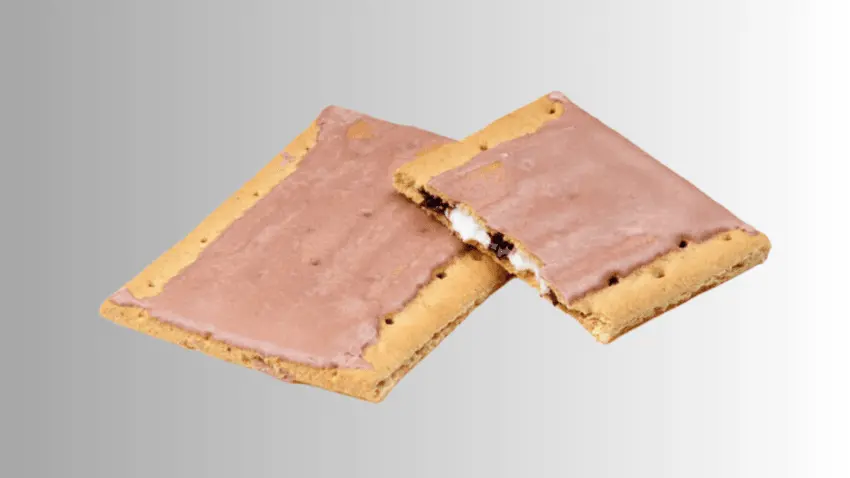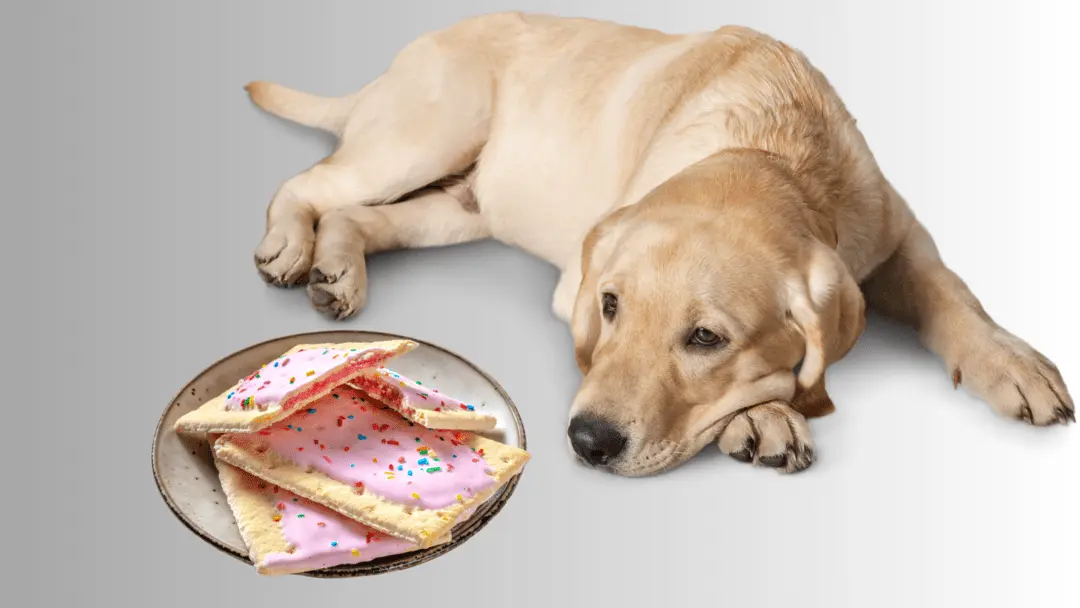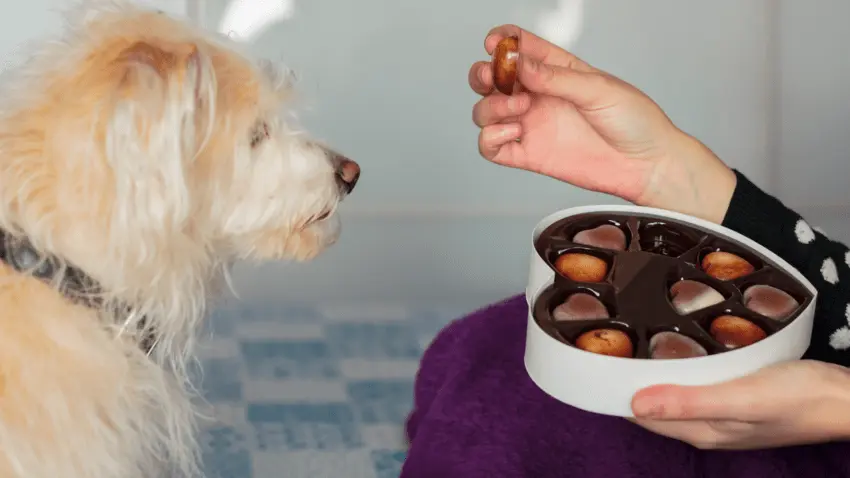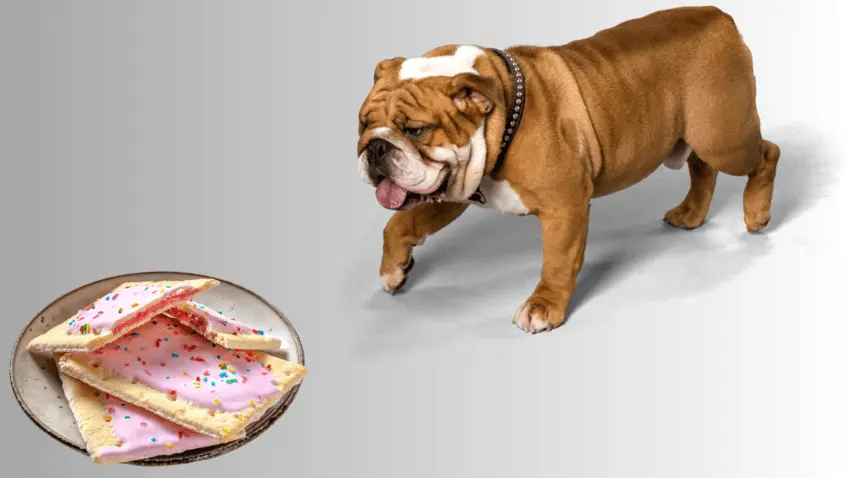My Dog Ate A Chocolate Pop Tart, Should I Worry?
Chocolates, like other human food items, are toxic to canines. But what if my dog ate a chocolate Pop Tart?Before you panic, it’s important to read the following points so that you can take the necessary steps. Aside from chocolate, there are other things in choco Pop Tart that you need to worry about.
What’s in a chocolate Pop Tart?


Pop-Tarts come in a variety of flavors, including a series of chocolate ones. Your dog may or may not be in trouble, depending on the ingredients.
For example, the fan-favorite Frosted Chocolate Chip Cookie Dough Pop Tarts contains cocoa. Cocoa is chocolate, which contains the substance theobromine.
Theobromine is an alkaloid found in cocoa and chocolate products. Unfortunately, canines can’t metabolize this substance.
Also, the fact that Pop Tarts contain both cocoa butter and cocoa is alarming. While theobromine content is lower in cocoa butter, the combination of the two can still wreak havoc on your pet’s tummy.
Aside from that, if your dog has allergies or intolerance to corn, Pop Tarts are a terrible choice of sneaky snack. This treat contains a concoction of corn syrup, which can be bad for very sensitive dogs.
On the other hand, homemade pop tarts are also marketed as sugar-free. Unfortunately, if your dog ate one of these, you have to worry about another thing: xylitol.
Xylitol is natural alcohol, which is a popular sugar substitute. It has a sweet taste but with a much lower calorie content than table sugar.
So what’s the problem with xylitol? This substance is highly toxic to canines, even in small amounts.
Around 50 mg of xylitol for each pound of a dog’s weight is already considered lethal. It can lead to liver failure if not addressed right away or if the canine continues to consume the product.
Xylitol is the same substance that causes poisoning when your dog eats gum or candy. (read my article What Should I Do If My Dog Ate Candy Cane)
What will happen to my dog after eating Pop Tarts?
Just because your dog ate a chocolate Pop Tart doesn’t mean it’s going to drop dead. There are a few things we have to consider here, including the following:
First, what is the size of your dog?
A toy breed that ate a whole Pop Tart is at greater risk of poisoning than a Golden Retriever who ate the same thing. But just because your dog is big doesn’t mean he’s already in the clear.
How much Pop-Tarts did he consume?
If your dog raided an entire box of Pop Tarts, it’s best to bring him to the vet right away. However, if we’re just talking about leftovers or a single serving, it’s best to wait it out.
Overall, it will take 6 to 12 hours for chocolate poisoning symptoms to occur. So if your dog didn’t show symptoms within this period, it’s safe to say that he’s on the clear.
When did your dog consume the Pop Tart?
This part can be tricky, especially if your dog ate the Pop Tart while you were away. However, if it’s within the 8-hour timeline, it’s crucial to observe your dog.
Most of the time, dogs that consume a lethal amount of chocolate will show immediate symptoms. However, if your dog is acting fine, just continue observing if any adverse effects occur.
How much chocolate is toxic to dogs?

Generally, your dog has to consume 0.5 ounces of milk chocolate to suffer poisoning for every pound of its weight. However, the number can be lower for canines with heightened sensitivity to theobromine.
If your dog consumed semi-sweet or dark chocolate, it only takes 0.13 ounces per body weight pound to cause poisoning.
While there’s a threshold for chocolate poisoning, you should never try to test your dog’s limits. With that, you should never feed any chocolate-flavored food item to your dog.
Remember, no amount of chocolate is safe for dogs.
Signs of chocolate poisoning in dogs
If your dog consumed chocolate Pop Tarts, it’s essential to know the symptoms you should be watching for. Here are signs that your pet is experiencing chocolate poisoning:
- Vomiting
- Diarrhea
- Increased thirst and urination
- Panting
- Restlessness
- Muscle tremors
- Racing heart rate
- Seizures
If you notice these symptoms in your dog, you should call the vet right away. If the vet isn’t available, you can call a pet poison hotline for immediate help.
What should I do if my dog ate chocolate Pop Tarts?
If your dog isn’t showing any signs of poisoning, you can keep monitoring it at home. However, here are a few steps you should take while watching out for symptoms.
- Use a toxicity meter. While it’s not 100% accurate, the PetMD Dog Chocolate Toxicity Meter will give you an idea about how worse your dog’s poisoning can be.
- Keep your dog hydrated. Increased water consumption will trigger urination, which will help flush out the toxins.
- Walk your dog. Walking will also help increase your dog’s urination, so it will expel the chocolate toxins it consumes.
- Don’t give meals. Skip meals for at least 12 hours, so you can assess whether Pop Tarts are poisoning your dog or not.
- Wait it out. At this point, waiting for the symptoms to occur is the best thing you can do.
- Have the vet’s number ready. While you wait, make sure that you have the vet’s number ready in case your dog exhibits chocolate poisoning symptoms.
Treatments for chocolate poisoning in dogs
If your dog’s Pop Tart heist proved to be life-threatening, you should bring it to the vet right away.
At the clinic, the veterinarian will put your dog on IV drugs. Unfortunately, this induces vomiting or stomach pumping to flush out any of the undigested chocolate.
The vet will orally administer activated charcoal to absorb chocolate in some cases. This way, the undigested chocolate won’t be absorbed into the bloodstream.
After that, the vet will provide IV fluids to help dilute any remaining theobromine in your dog’s bloodstream. If seizures are present, the veterinarian will also provide medications like valium in controlled doses.
This is the typical treatment setup for chocolate poisoning, whether it’s Pop Tarts or something else. However, if the Pop Tart contains xylitol, the vet may provide additional medication to combat poisoning.
How to prevent your dog from eating Pop Tarts

If your dog survived or dodged chocolate poisoning, prevention should be the next step. Here are some tips I recommend to pet owners:
Clean up your countertops
Dogs are highly food-driven, and they will not hesitate to snack on leftovers on the countertop. This is why you should clean up any food, especially if it has toxic ingredients to canines.
We have a strict rule of not leaving any snack leftovers on the countertop at home. However, our dog Sherlock and cat Watson are partners in crime, so we never take chances.
Aside from countertops, we also check areas like the kitchen and other surfaces where the kids may leave (and forget) their snacks.
Lock up poisonous items
Macadamia nuts, chocolate, gum, candies, grapes, garlic, and raisins are poisonous to dogs. You should keep these on the top level of the fridge or inside locked cabinets.
If you’re going to eat a Pop Tart, always take it wherever you go. Never put it down on the table because it only takes a split-second for your dog to take a bite.
Consider getting a new snack.
If your dog had a bout of chocolate poisoning, it might be best to say goodbye to chocolate Pop Tarts. Instead, try exploring other snacks with low theobromine levels or minimal chocolate content.
Chocolate with low theobromine content is still dangerous for dogs. But since it has low toxic substances, your pet won’t suffer life-threatening symptoms in case it consumes some.
Educate your kids
Young kids are most likely to feed chocolate Pop Tarts to dogs. So it’s important to teach them that sharing is not caring when it comes to chocolates and dogs.
You should explain to your kids the consequences of chocolate consumption among dogs. It’s also best to teach your children that dogs should never be fed table scraps or human snacks.
Conclusion
What should I do if my dog ate a chocolate pop tart? First, don’t panic. Instead, assess the situation and observe your dog for up to 12 hours.
If adverse symptoms occur, you should immediately bring your dog to the vet. You can also perform first-aid as supervised by your dog’s vet.
Just remember that situations like this can be easily prevented with proper precautions. For example, where you leave your sweet snacks will spare your dog from suffering.
